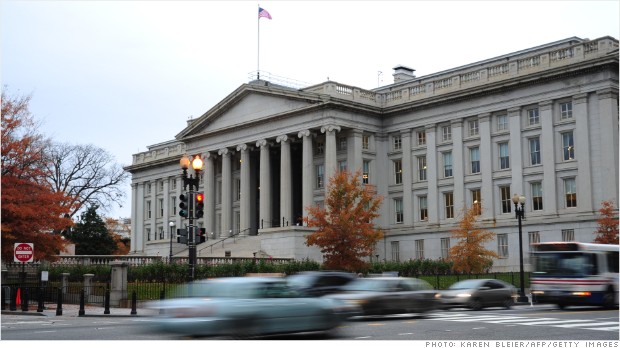The U.S. economy may have avoided falling off the fiscal cliff into a new recession, but it is still going to tumble down a rocky fiscal escarpment -- and that's not so good either.
The deal struck between the White House and Republicans to avoid the so-called "fiscal cliff" of tax increases and spending cuts is still going to hurt economic growth, economists said on Wednesday. The only question is how much.
The fiscal cliff deal delays or prevents some of the worst consequences of the cliff from taking place, but not all of them. The hit to growth will be something on the order of 1.3 to 1.75 percent, according to a handful of early estimates. That's meaningful for an economy widely expected to muddle along at 2.3 percent gross domestic product growth next year, according to the latest survey of economists by the Wall Street Journal.
By way of comparison, the Congressional Budget Office, Federal Reserve Chairman Ben Bernanke and other economists had warned that going full Thelma-and-Louise over the fiscal cliff would have triggered a new recession in the early months of 2013. Not everybody agreed, but many economists estimated that the full cliff could cut economic growth by between 2 percent and 4 percent this year.
The deal to avoid the cliff is so unhelpful as to be effectively useless, according to University of California-Berkeley economics professor Brad DeLong. His "back-of-the-envelope" estimate is that the deal shaves 1.75 percent from gross domestic product. According to DeLong, the best deal would have not only avoided any hit to the economy, but also added 1 percent to short-term economic growth. This deal "is only 40% of the way back from the 'austerity bomb' to where we want to be," he wrote on Tuesday.
"That isn't enough to make it worthwhile to make a deal before the new congress," he wrote. Too late!
One of the biggest immediate hits to the economy is the expiration of the payroll tax cut, which for some reason nobody was interested in extending for another year. That alone could trim 0.5 percent from GDP, according to Pantheon Macroeconomic Advisors chief economist Ian Shepherdson -- and that doesn't include any "multiplier" effects from weaker consumer spending. Goldman Sachs economist Jan Hatzius sees the payroll-tax cut shaving 0.6 percent from GDP.
Moody's chief economist Mark Zandi said in an emailed statement that he thinks all of the tax increases taking effect this week, including the payroll-tax increase, will cut 0.75 percent from GDP growth and lead to 600,000 fewer jobs being created this year.
All told, Pantheon economist Shepherdson sees the fiscal cliff deal hurting GDP by 1.5 percent, he told clients in a note on Wednesday.
"That’s still far too much for such a fragile economy but it will not push the U.S. back into recession," he wrote.
Most of the effects should pass by the middle of the year, Shepherdson believes -- assuming there is yet another deal on the debt ceiling, the expiring federal budget and delayed fiscal cliff spending cuts, all of which are supposed to hit by late February or early March. No deal on those, and we could be looking at another financial crisis. (No pressure.)
Cullen Roche, founder of Orcam Financial Group, a financial services firm, wrote on his blog, Pragmatic Capitalism, that he thinks the deal will hit GDP by 1.3 percent. His estimate includes Goldman's payroll tax hit and some of the "multiplier" effects cited by the CBO.
Roche also reminds us that, while consumers and businesses have been spending cautiously since the Great Recession, the federal government has been making up for some of the demand by running high deficits. Contrary to what you might hear on C-SPAN or CNBC, this is a good thing. And that deficit will be ever so slightly smaller this year, offering less support for the economy.
"The bottom line: this could have been much worse," Roche wrote. "Unfortunately, it’s not completely over."
Update: Like he does, Phil Izzo at the WSJ's Real Time Economics blog has a fairly comprehensive roundup of economists' reactions. There seems to be a consensus building around a 1.5 percent hit to GDP from this deal.













